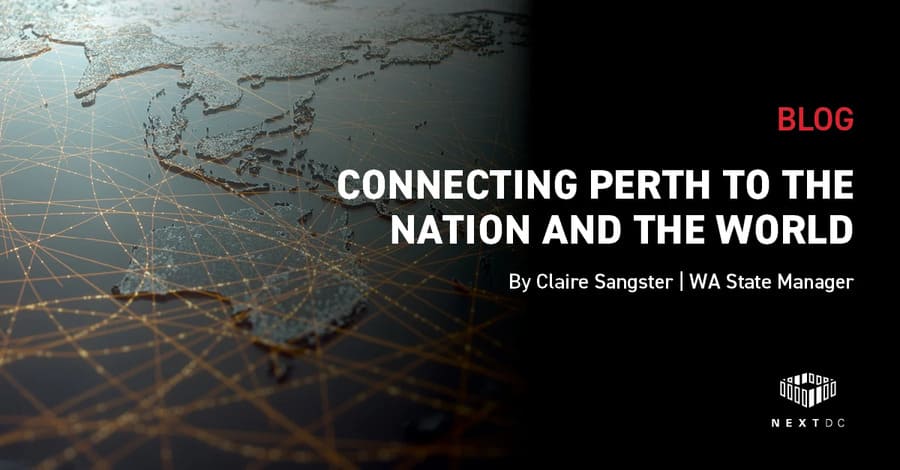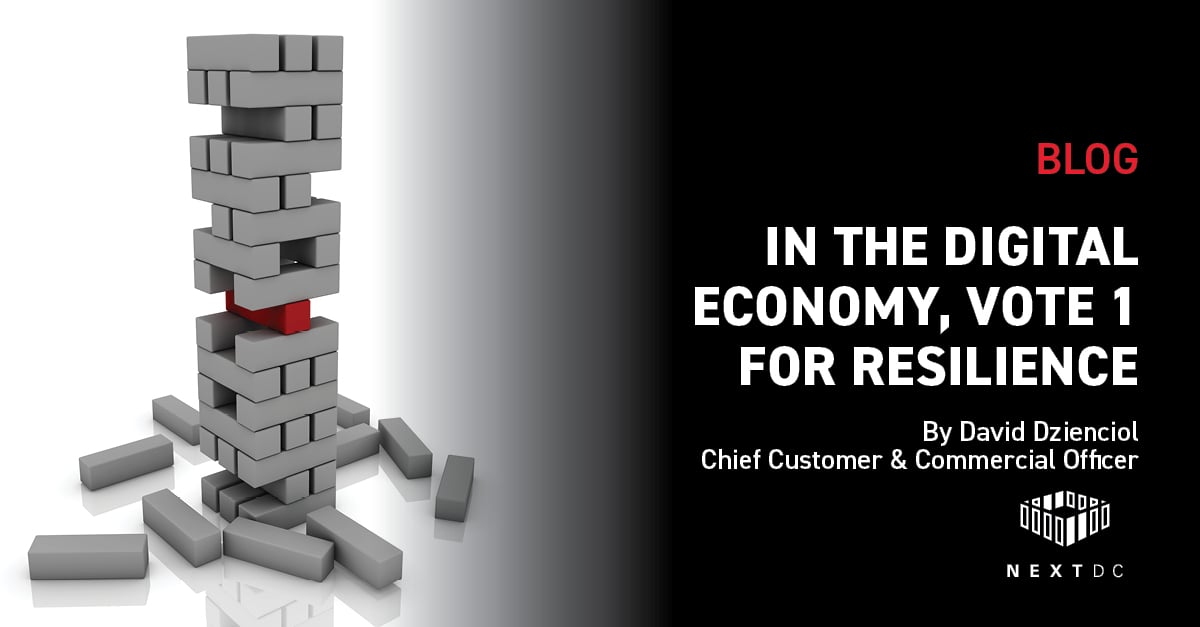Written by Adam Gardner - Head of Products
Imagine a world of ‘consistent’ connectivity experiences. A world of guaranteed reliability and cost-effective options – where your business seamlessly and directly connects to your cloud providers and delivers consistent connectivity experiences – each and every time.
Whilst some think this ‘connectivity’ reality is a pipe dream, I’m here to bust that myth.
When it comes to connectivity, there’s now increased flexibility and choice, cost-effective options and plenty of support available. But there’s a problem: misinformation and ingrained beliefs are stopping today’s overstretched CIOs and IT managers from seeing the big picture and ultimately achieving their IT infrastructure and connectivity goals. In fact, there’s 5 big myths wreaking havoc in the cloud era, but for the purpose of this blog, let’s stick to the first 3.
As Queen famously immortalised in song, “I want it all, and I want it now,” today’s busy IT professionals have similar ‘wants and needs’ and are on a mission to find their own voice in delivering their interconnected infrastructure strategy – but are clearly unsure – or simply unaware - how to achieve their goals. They simply don’t know what they don’t know – in terms of solutions available or the right questions to ask.
So, let’s break it down and get on with busting some myths. In Part 1 of this 2-Part ‘MythBusters’ series, the goal is to empower IT professionals to see the big picture, feel more confident about actively asking the right questions of their data centre providers, and score some wins on the board with regards to their digital infrastructure strategy.

Myth #1: Public versus Private cloud connectivity – the big cost confusion
Let’s face it: Private connectivity is a scary word in the IT lexicon, conjuring up all sorts of negative imagery and confronting language including: expensive, permanent and contractually obliged.
For many, the word ‘private’ gives the illusion it’s like a private carrier connection that’s illustrious and exclusive - and ‘naturally’ off limits to the average business and IT professional.
But in reality, private connectivity to cloud services is highly flexible, achieves far greater performance, is outcome-focused, and reliable and resilient. But the real kicker, it’s super cost-effective.
Certainly, everybody wants to be part of a private club, but many can’t even begin to grab a seat at this ‘exclusive’ table because it comes with a hefty, cost-prohibitive price tag.
But let’s reframe the discussion and reveal how cost-effective private connectivity actually is when connecting to cloud providers. Not only that, private delivers better performance, greater reliability and consistency of experience (given it’s a direct connection into your clouds), and lowers latency and jitter by an astronomical amount, compared to public connectivity.
On the performance front, private connectivity vastly improves the customer experience, offering consistency of performance and putting an end to ‘jitter,’ which commonly plagues public connections.
For example, when connecting over the Internet, there’s a million different factors including Inconsistent routes and packet delivery. But when going direct to cloud, the experience is the same every single time. Like a McDonald’s menu, it’s consistent: You know what you’re going to get, it’s always the same.
The end result? The lowest latency possible, and peace of mind you have a reliable, consistent network to support your evolving cloud strategy.
Better still, direct to cloud means direct to the cloud, no variable paths. Ensuring no variable paths, means no variation in the delivery of your packets, resulting in extremely low jitter (a variation in latency) which is super critical in a world where voice and video have become our main form of connection to our customers and our people.
At the same time, the cost conversation needs to be put into perspective, and considered in terms of its value.
No doubt, a private connection is better in every instance and across every scenario. There’s a reasonable cost for that (not a cost-prohibitive one, but a cost nonetheless) but you get more bang for your buck because the outcomes on offer are much higher in value.
Let’s think of it this way – businesses no longer have to waste time at the start of every video call, asking if the audio and video works. If we could cut off that first ten minutes at the front of every call, that’s a massive improvement alone.
In fact, it’s that consistency of experience that’s so important. When considering latency, consider the difference between 40 millisecond latency, compared to 6 millisecond latency.
Does it matter? It certainly does. There’s actually a really big difference from the application layer. From a human layer, 40 and 60 milliseconds makes no difference at all, but what does make a difference is when the variations swing and deliver consistently poor performance. For example, if it’s 40 and then 200 and then 300 and then 40 again, which is typically what happens over the Internet.
Questions to Ask:
- How can my data centre provider guarantee a consistent connectivity experience?
- What are my options in directly interconnecting my clouds, from within my data centre.
- How do I scale this service so support my ongoing cloud journey?
Myth #2: Adopting Multi-Cloud – and why it matters
A Multi-Cloud approach is an important part of any cloud connectivity strategy and critical in today’s ever-evolving IT landscape.
And it’s not a binary solution: If you think about cloud, your requirements today are going to be very different to those of tomorrow and into the future.
Therefore, IT professionals need to think carefully when choosing a data centre provider and ensure they offer choice and options when it comes to supporting your long-term cloud strategy.
NEXTDC are largely known as the leading interconnectivity hub for Australian businesses. The reason being is our national digital infrastructure platform houses Australia’s most interconnected specialist partner ecosystem of over 660 partners. We’re Australia’s most connected data centre in terms of access to hyperscale cloud providers, private clouds providers, carrier networks and ICT services organisations. The real value however lies in our virtual interconnection platform, AXON, a powerful software-defined networking fabric that delivers direct and dynamic connections to all of the leading clouds, and services providers – including those that reside in third party facilities outside of NEXTDC’s.
What do IT leaders need to think about when it comes to Multi-Cloud? For starters, they need to consider their specific needs and align it to best suited capability. The days of ‘all eggs, one basket’ are dead and buried.
Certainly, Multi-Cloud environments are having a massive impact and creating opportunities – but businesses need to pick what’s right for them – based on their unique requirements.
At the same time, cloud is fantastic for some applications, but not the best for others.
The point is to mesh that concept of Multi-Cloud (the best bits from multiple clouds) and Hybrid Cloud (a combination of colocation, DR/tertiary sites and various cloud platforms) – and find a data centre partner that provides flexibility and choice throughout an organisations cloud journey.
In short, organisations need to focus on a data centre provider that offers choice and flexibility when it comes to orchestrating and continuously evolving their cloud and interconnection strategy.
Questions to Ask:
- How does my data centre provider support my Multi-Cloud/Hybrid Cloud strategy?
- Proximity to my clouds is important. How do you offer direct access, natively and at the closest proximity?
- How will my connectivity strategy evolve in line with my cloud journey?
Myth #3 – Flexibility and scalability – and the dreaded long-term contract
Flexibility and scalability on the connectivity front should be high on any IT leaders agenda. Signing up to a 36-month term to get from point A to point B, is no longer representative of the flexibility of what customers need right now.
The rapid pace of change coupled with the precariousness of life and countless unforeseen events (dare I sat it…pandemic and biblical rain and flooding) means businesses need to be ready in an instant to ramp up their bandwidth and ensure other up-to-the-minute infrastructure requirements are met and satisfied.
As such, customers should be able to turn things up and down – in a self-serve manner – and with contract terms as little as one day, if that’s what they need.
The flexibility available today, means IT teams can increase bandwidth by 100% in a weekend, if needed. They can spool up to a 10 Gigabyte service into the cloud to support a project, then turn it off again; without any form of commitment.
So, what’s the key takeaway? IT teams need an interconnection strategy that allows them to scale rapidly, move quickly, and self-serve their needs as and when they arise.
Questions to Ask:
- What’s the fine print around your connectivity options?
- How does your solution mould itself around my unique requirements and support the dynamic changes in my business?
Start by busting open these three myths – and ask those vital questions. Your interconnection strategy underpins the success of your business, so finding a partner that will guide you along your cloud journey – and like a trusted, loyal friend, is a critical part of your success story.
Like all good stories, this one must come to end. Make sure to join Part 2 of this ‘MythBusters’ series to unearth what other challenges you can tackle - and overcome – with the right artillery.
Reach out to our team to better understand your choice around cost effective and flexible options.

.jpg)
